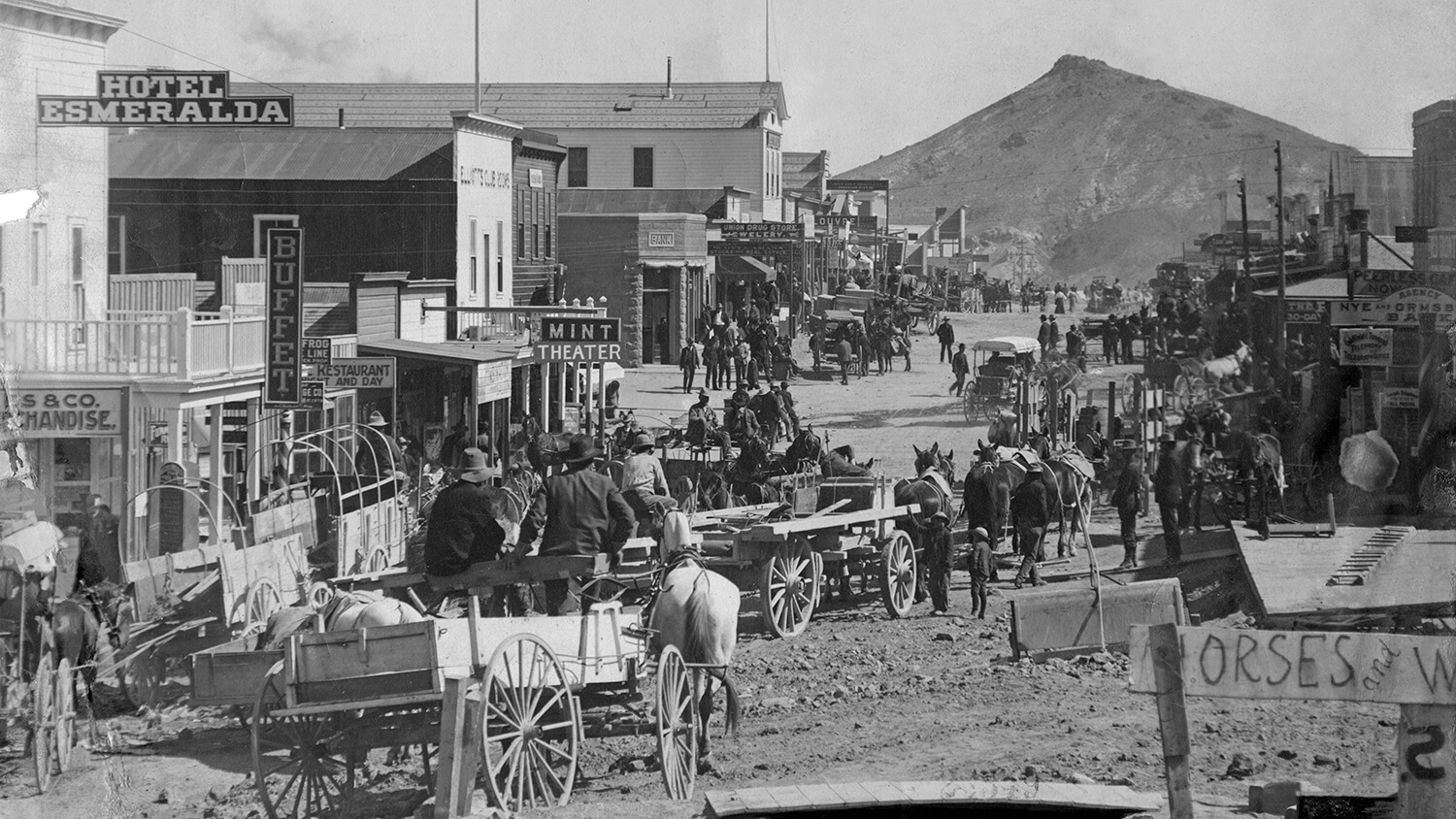16 Ways to Move the Nevada Story Forward
So many of Nevada’s history-oozing buildings have been immaculately well cared for throughout the past 150 years, while other ones (thanks to preservationists, historians, or simply fans—young and old) are finally getting shown the respect they deserve, to ensure these destinations stick around. Because in all actuality, they all matter. Some of them, flaunting the power and beauty they were born with a century ago, beckon you from your #NVRoadTrip without much effort. Then there are the ones you gotta work for, but if you’re adventurous, you already know it’s the chase that makes it worth the squeeze, baby.
This lineup of 16 historical sweet spots is going to have you feeling Nevada nostalgia in all the right ways, and honestly, we can’t come up with a better link to our past than walking through the same doorway Wyatt Earp or Mark Twain did. Except for maybe getting caught in an impromptu history sesh by a classic older-than-you guy who looks like he might have lived it. Hear us on this, guys: he probably did… so LISTEN! Who knows? Maybe he caught a performance at the old theater you’re standing in front of, or dined at this counter as a kid when the Basque sheepherders were still boarding upstairs… or touched some other real-deal piece of the past you normally have to read about in books (or travel blogs). We’re just saying: listen to this guy and, hey, you might just learn something the internet doesn’t know about—and maybe even come away from it all with a connection to an old place, thanks to a new story of your very own. #ThisPlaceMatters
Peel back the pages
The Mizpah Hotel
Boulder Dam Hotel
Carson City U.S. Mint Building
Goldfield Historic High School
St. Augustine’s Catholic Church
La Concha Motel Lobby
Fallon Theater
Cowboy Arts & Gear Museum
Tom Kelly Bottle House
Belmont Historic District
The Depot
David Walley’s Hot Springs
Thompson’s Opera House
The Martin Hotel
Berlin Historic District
Virginia City National Historic District
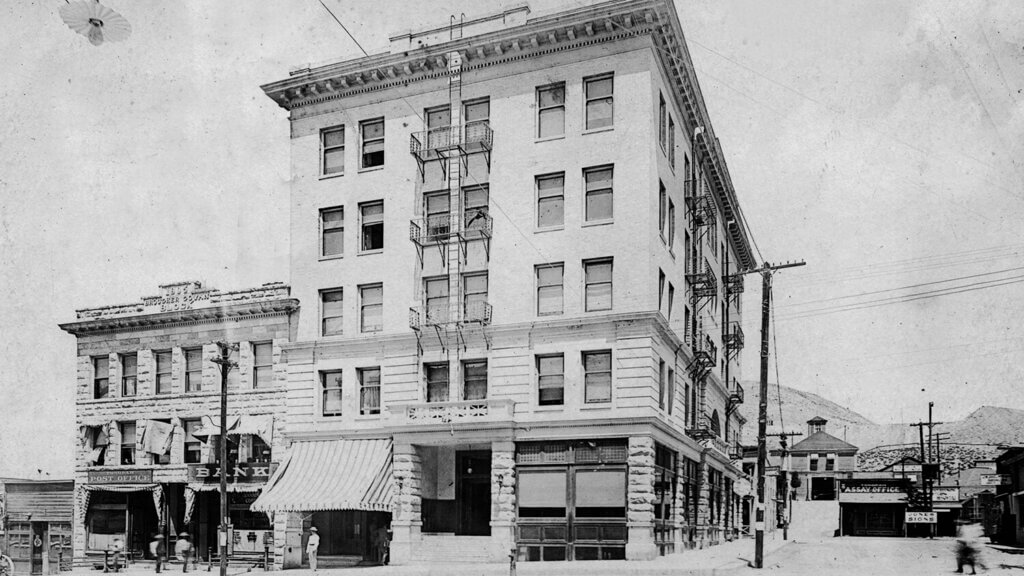
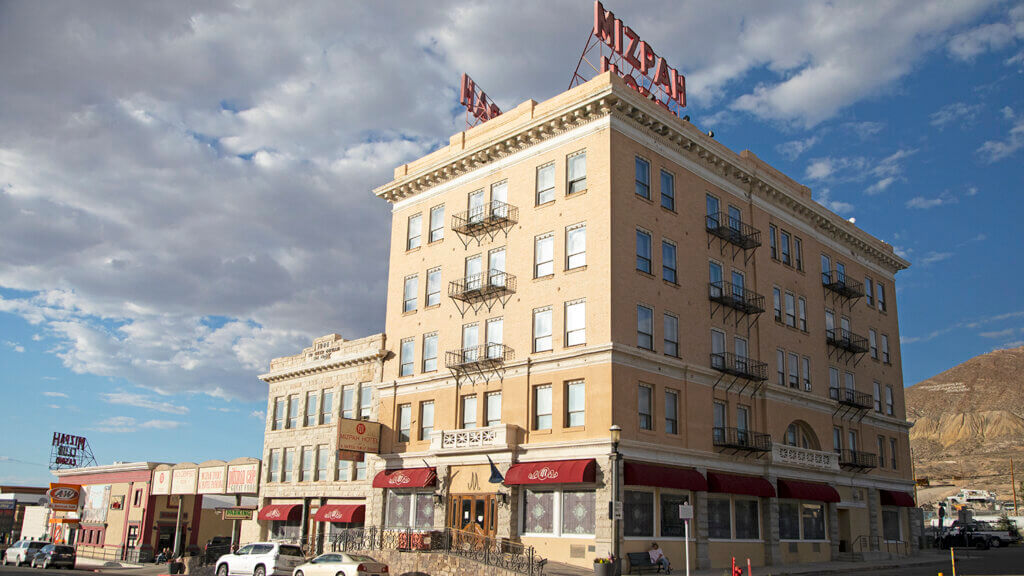
The Mizpah Hotel
Tonopah
Find it along the Free-Range Art Highway and Extraterrestrial Highway road trips
OK, guys. If you take away one thing and one thing only, it’s this: Of all the historic properties in Nevada—and yeah, there are a LOT—this one is the big dog. Tons of the buildings in this lineup have been brought back to life to resemble the type of game-changing, upper-echelon sort of situation also going on at the Mizpah, and, while historic preservation has in fact gone down at this historic hotel, this one is such a success story for a few specific reasons.
The Mizpah earned its reputation as “The Finest Stone Hotel in the Desert” the second it opened in 1907. Tonopah had just boomed in a serious way, thanks to Jim Butler and his burro, and things were movin’ and shakin’ in the truest sense of the description. This is where a range of people—from hardworking miners looking for a frosty mug to famous gunslingers, “ladies of the night” to the fanciest of the fancy—all hung out. And now, 100+ years later, you can still get a taste of that the moment you step through the threshold. Yep, it’s that transformative of a place. Count on masterfully done era-specific décor, like the original purple glass decorating the lobby bar, or the original elevator—slow moving, but one of the first ever west of the Mississippi.
Today, it’s registered on the National and State Register of Historic Places, and is Nevada’s ONLY site listed among the Historic Hotels of America, which is a super big deal. Although the Mizpah had its fair share of owners, one of the reasons this place is so incredibly intact is because, even when the place was closed for business, it remained under the watchful eye of a caretaker (minus one tiny window of about 10 years). That, and because an incredible owner took the reins in 2011, privately funding the restoration of this Nevada icon in order to bring it back to its original glory for a new generation to experience. The fact that it’s operating today as it always has throughout the past century? Mizpah mic drop, guys
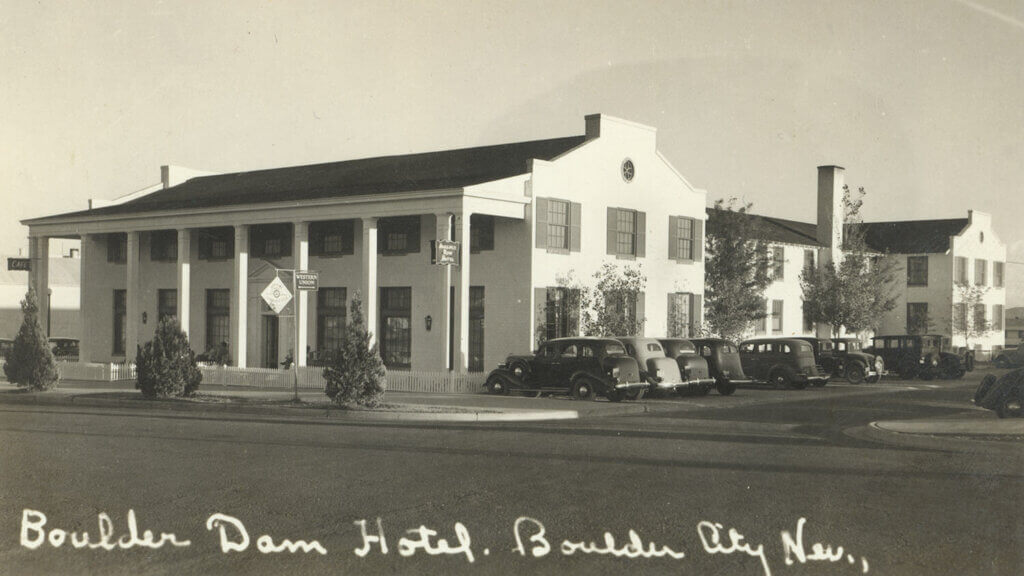
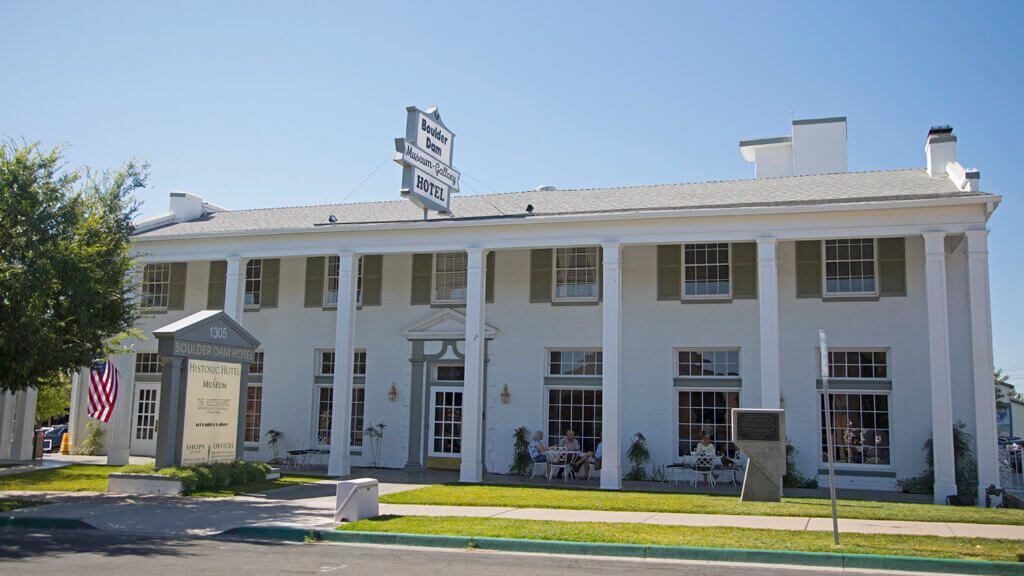
If you’re searching for serious throwback delight, it’s hard to supersede what’s happening in the Boulder City Historic District as a whole, guys. The entire town sprung to life to house the thousands of workers who flocked to southern Nevada to build a modern marvel of the world: Hoover Dam. In order to keep workers focused on completing this face-meltingly enormous structural project—no seriously, we’re talking 3.3 million cubic yards of concrete here—Boulder City became Nevada’s first non-gaming city, and remains one today. The instant you cruise under the Winged Figures of the Republic Historic District archway and enter the downtown, you’ll feel it. The most perfect vintage neon signs buzz along the main drag peppered with roadside inns, coffee shops, and restaurants before you make it to the anchor of the entire historic district: the Boulder Dam Hotel.
This differs from a lot of other important historic Nevada properties because of one teensy tiny reason: the hotel was built to host people visiting this world-famous Dam. Annnd, not just any visitors. We’re talking super-duper important people, like celebrities and even U.S. Presidents. Up until the Hotel opened in 1933, Boulder City was merely a “government town” there to house the workers, but once the Boulder Dam Hotel opened its doors, in came people like Shirley Temple, and even Howard Hughes, who recuperated at the hotel after wrecking his airplane in Lake Mead. The hotel’s private baths, air conditioning, and wood paneled lobby satisfied the upper crust, and still beckon the masses, history nerds or not, to this very day.
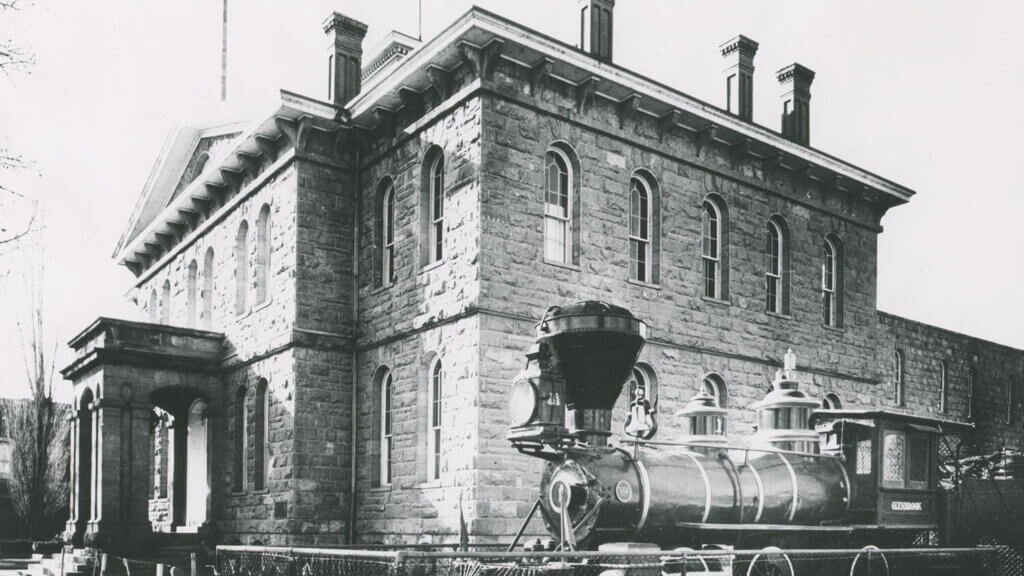
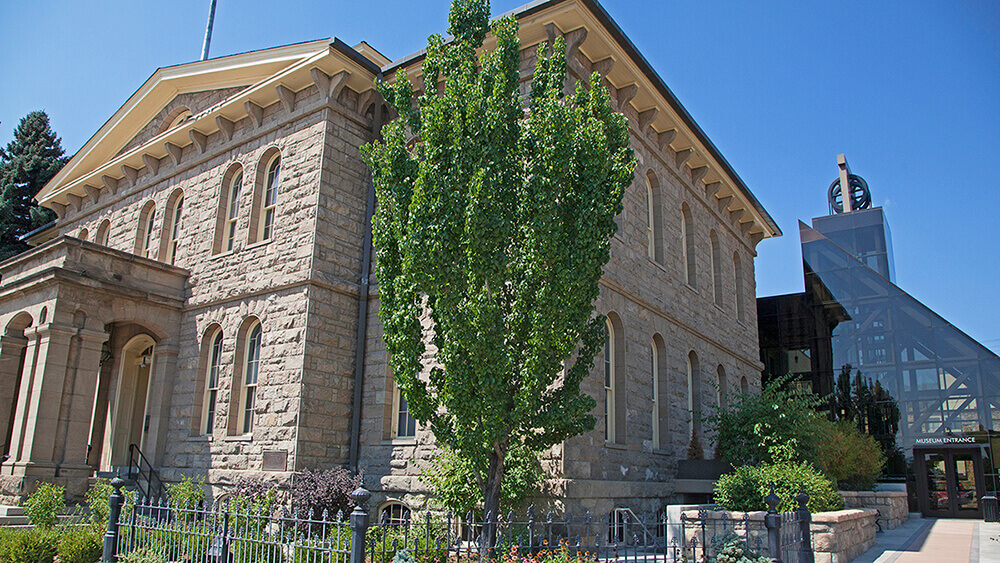
Oooooh, Nevada’s capital city: Carson City. This one is bound to have some serious historical legs, right? Right. The place was a stopover for prospectors chasing their American Dream during the California Gold Rush, but became a real-deal town, once the largest silver strike in U.S. history went down just up the street. Prospectors struck the mack daddy of silver veins in 1859, and the wealth from this strike pretty much funded the development of the entire west coast, especially for cities like San Francisco. Ultimately, this was the bump that Carson City needed to become an actual city, and with that designation (on top of a gargantuan monetary boom from all the silver literally coming out of the surrounding hillsides), it was a natural location for a United States Mint.
The Carson City Mint was built in 1863, but didn’t officially launch into full swing until 1870, primarily minting silver coins, but also a fair amount of gold ones. Imagine how cool that would be to get your hands on a silver coin from that era—one made at this specific mint, made of real silver from THE Comstock Lode or the gold coming from THE California Gold Rush just over the hill? Crazy stuff. Anyway, the Carson City Mint closed intermittently for the next couple decades, and ultimately closed after only 20 years of being in “operation.” The state got its hands on it in 1939 and turned it into the official Nevada State Museum. As you can see, the architecture is pretty boss. There’s a replica Ghost Town and underground mine in the museum that’s rumored to be haunted, it hosts some pretty incredible relics like a Pony Express Rider’s Bible, and, best of all, the building has been historically preserved for you and me to actually get into and peruse today.
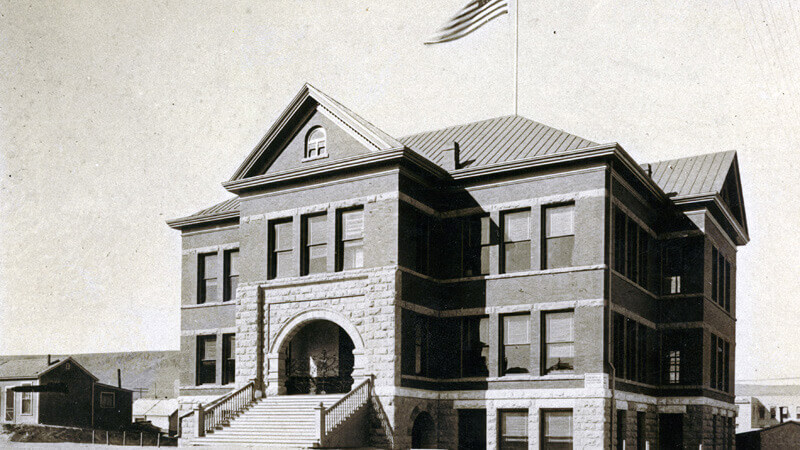
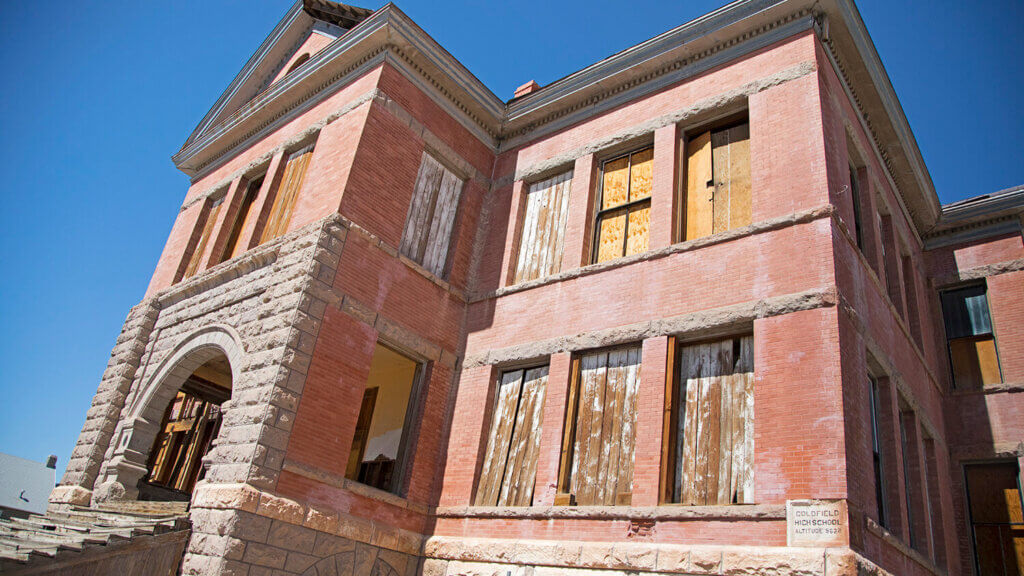
Going to Goldfield is kind of like going to Target… you head in to check out the original Tiffany lamps in the Historic Courthouse, and then, three days later, next thing you know, you come out with a membership to the town’s historical society. There is something about Goldfield that easy to get caught up in, every single time. Remember THAT if you ever hear someone dismiss Goldfield as “that one weird ghost town with nothing in it that you have to slow down to 25 to get through.” Way more than meets the eye guys, and it starts with the Goldfield Historic High School.
The School isn’t listed as an individual landmark, but as part of the greater National Historic District Goldfield has been blanketed with. Yeah, the whole damn town is a big deal, so be sure to open your eyes the next time you’re there (…especially since you DO, in fact, have to slow down to 25…) See what we did there? Though it doesn’t yet have all the bells and whistles of a property like the Mizpah, this School is worth a callout, not only because it’s a window into the real American frontier mining experience, and Goldfield’s dramatic rise and fall in it, but also because appropriate steps for preservation are happening real time.
Goldfield suffered a slew of natural disasters all within about a decade or so, which is why whatever you see still standing here today was ultimately built to last—and has. Local historians swooped in about ten years ago and have been working to save the school, but here’s the good part: they’re restoring, NOT renovating. There’s a difference, and a big one. Any construction company could come in and rebuild this place with whatever foundation still exists, but to move forward with historic integrity in mind? Talk about the grand champions of Nevada history—for real, though. The pride of ownership today is overwhelming; spend a few hours with the masterminds behind the renovation project and you’ll see what we’re talking about—and maybe even get caught in Goldfield’s web yourself—but this is one to keep your eye on. Take the tour through the weathered grounds today, but we’ve got a sneaky suspicion history is in the making for this already historic site.
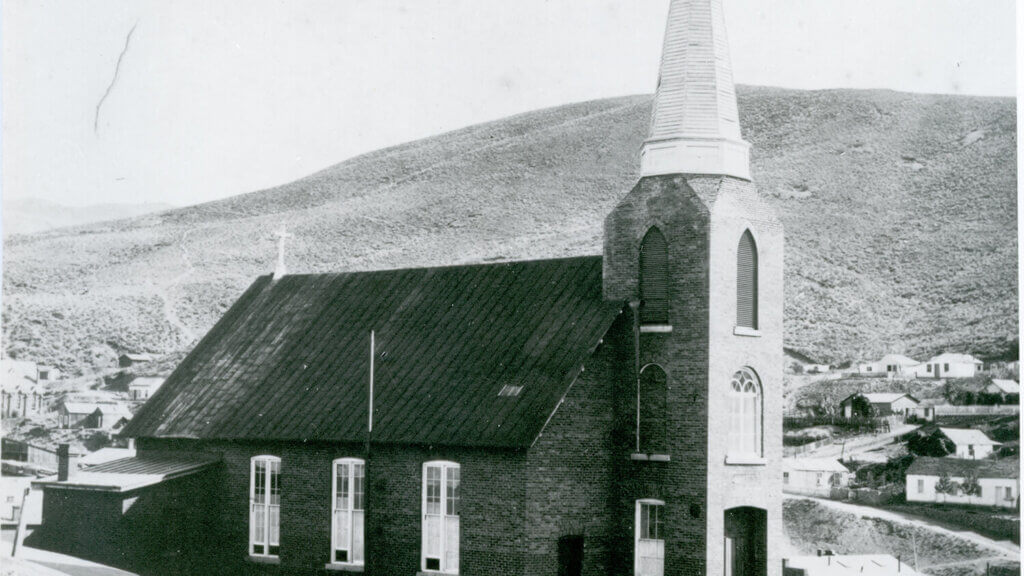
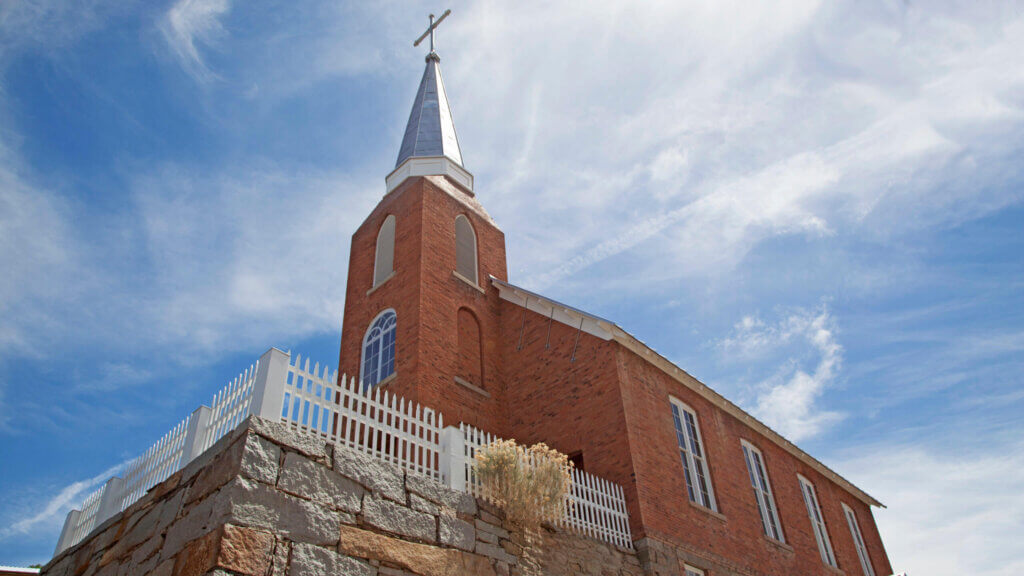
St. Augustine’s Catholic Church
Austin
Welcome to Austin! Nickname: “The City of Churches.” If you’ve been, you know exactly what we’re talking about. This modern-day population of less than two hundred has three old, massive churches to choose from, each with sky scraping steeples towering overhead—yeah, you could say they’re a little hard to miss. The reason for so many churches in such a tiny town? The thing is, it wasn’t always this small, but instead boasted a population of over 15,000. Austin experienced a major silver boom in the 1860s, allegedly discovered—get this—when a Pony Express rider’s horse kicked over a rock, revealing it was rich in silver.
True to fashion, Austin boomed then busted, but wasn’t a done deal without leaving some super awesome historical buildings behind. The Austin Methodist Church, Episcopal Church and Catholic Church work together to deliver a pretty amazing experience to visitors or locals alike, but the hours that logged into bringing the Catholic Church back from faded glory is the real show stopper here. Built in 1886, St. Augustine’s Catholic Church is considered by many to be one of the prettiest frontier churches still standing, with original mural work still intact. Oh, and for tall you organ-lovin’ nuts out there, you may even be able to channel your best Dan Aykroyd in Nothing But Trouble with with an organ original to the building—a Henry C. Kilgen organ, to be exact. Part of the Austin Historic District, St. Augustine’s still functions as the community’s cultural center.
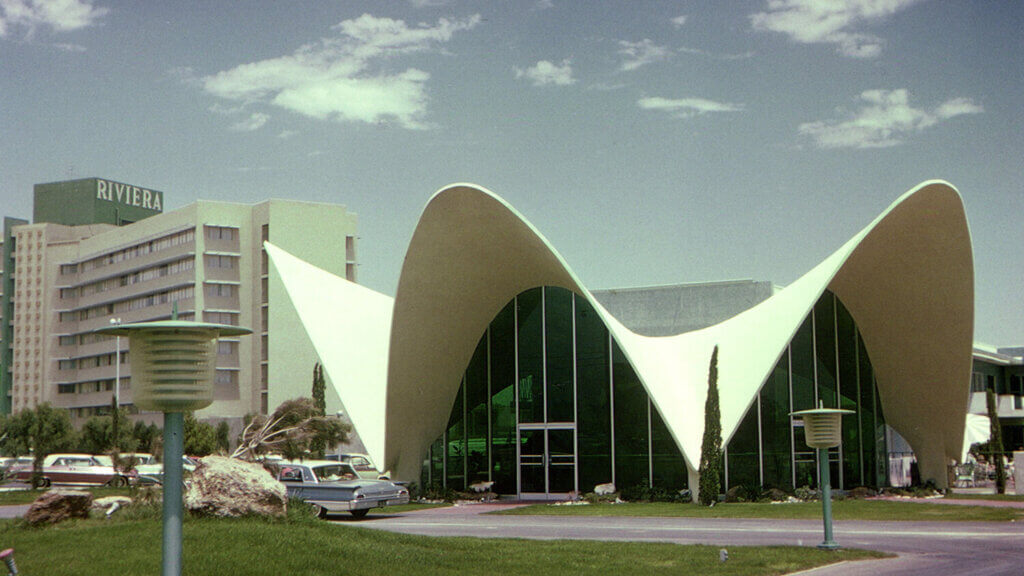
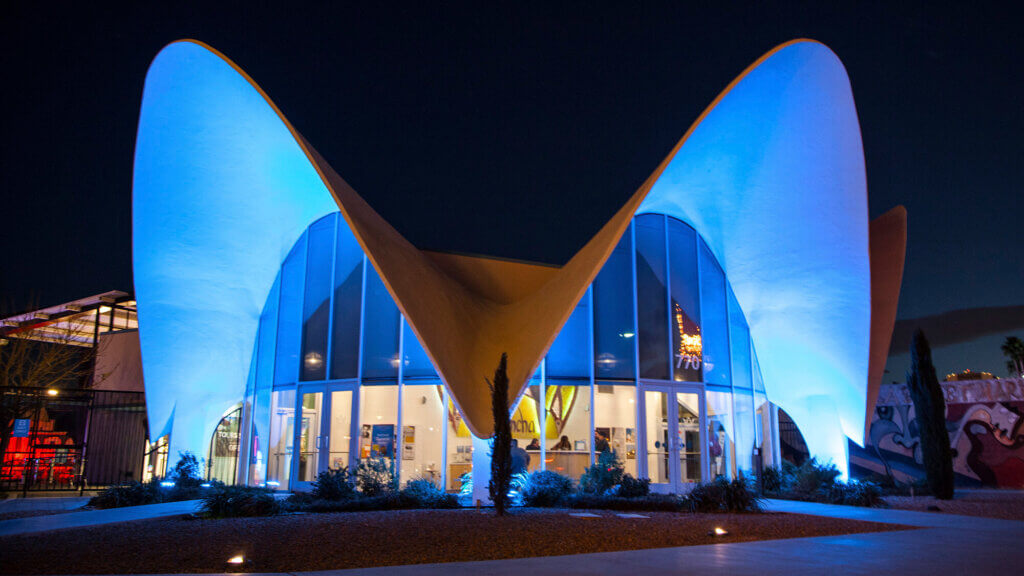
Ever ever seen footage of one of the dozen or so Vintage Vegas casinos or hotels that were imploded to the ground to make way for new attractions? You’ll be glad to learn this specific hotel has a happier ending—one of the few for the bygone buildings of Las Vegas. Although the city is a multi-million-resident metropolis and top international travel destination by today’s standards, remember that in the 1960s Vegas was really just starting to crank up… with only 127,000 people calling it home. Hard to imagine, right? Most motels weren’t the multi-mile square-foot mega-beast resorts they are today, but instead were the what would be the cutest retro throwbacks you can imagine today—smaller and each with its own unique stylings and architecture. ENTER LA CONCHA.
Built in 1961, this architectural gem is the sort of thing that we imagine when picturing the 60s… knee high boots, bright orange lipstick and white sunglasses, aluminum multi-colored Kool-Aid cups, and a new wave of architecture… like La Concha so masterfully employs. A wavy roof like that? Totally blew people’s minds. In fact, the lobby (pictured above) is considered to be one of the best preserved examples of 1950s Googie architecture. La Concha is a horse of a different color, compared to the other historic places on this lineup because of this little detail: though it was originally located on the famed Strip, it was relocated to its present day spot, just north of Fremont Street. Extensive restoration went into making this original hotel lobby into official HQ for the Neon Museum, and boy howdy, I couldn’t think of a better building to beckon the masses for a good old-fashioned Vintage Vegas smackdown. Is there any better pass through to exploring iconic neon signs decorating storied Vegas hotels than the best example of architecture of that time those same signs buzzed above the Strip? Nah, didn’t think so.
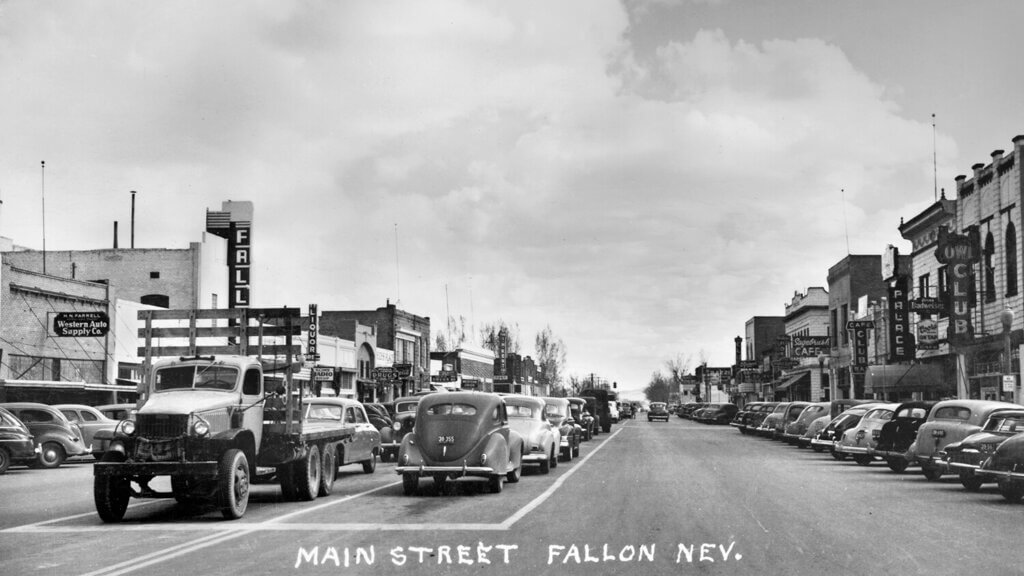
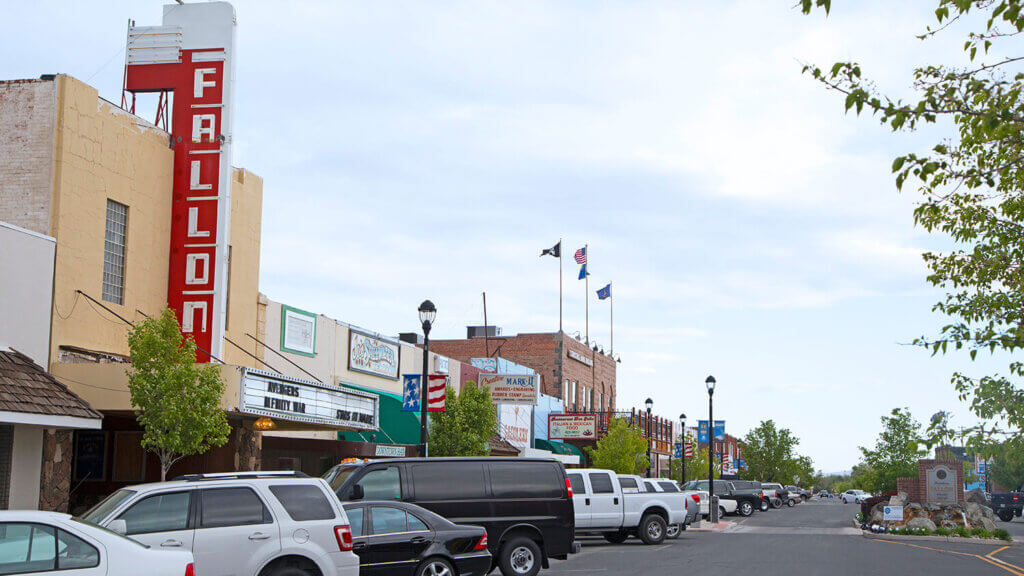
Imagine what it must’ve been like to get all gussied up, jump in the Roadster, and head out for a night on the town to catch a movie at one of those iconic Mission Revival Style theaters? You know, the ones in the movies featuring a glamorous and polished era that you wish you could’ve experienced. Well, guys, in Fallon, you CAN grab onto that experience to this very day… (all of it except maybe the Roadster). About an hour outside of Reno on the Loneliest Road in America is the quiet agricultural community of Fallon, and considering it’s on the edge of a route tons of early pioneers followed, the town has been around for a long time. In America in the early 1900s, live performances and theater began to take the back seat to filmed fictional stories intended to generate excitement, which over time, built a super loyal audience. As a result, theaters started to pop up all over the country in a serious way; every town had one as one of its most proud features. By around 1920, a face-melting 25,000 movie theaters had popped up across the US with an average attendance of six MILLION people per day.
The Fallon Theater has a similar story: two native Mississippians came to Fallon in the early 1900s as part of the performing industry, realized what a missed opportunity it was by not having one in town, and made a theater happen on the main drag. It wasn’t easy; it required giving six wooden buildings the heave-ho, but they got it done and opened the theater by 1910. Famous Nevada architect Frederic DeLongchamps was tasked with designing the theater, and at its grand opening, could seat 1,150 people and featured a balcony, pipe organ and Steinway piano (back then, silent films were often still, like plays, accompanied by a soundtrack… played live). And of course, decadent classic Mission Revival architecture… columns, clean symmetrical designs, and later, neon. The good stuff. Throughout the next 100+ years, the operation of the theater was pretty flipping consistent, despite a handful of owners, the Great Depression, a massive economic boom after WWII, several earthquakes and in true Nevada fashion, a fire. Today, the Fallon Theater is on the State Register of Historic Places, but the fact that what started as movie theater still IS a movie theater and you can have an identical experience here today that went down over 100 years ago? Yep, just doesn’t get much better, does it.
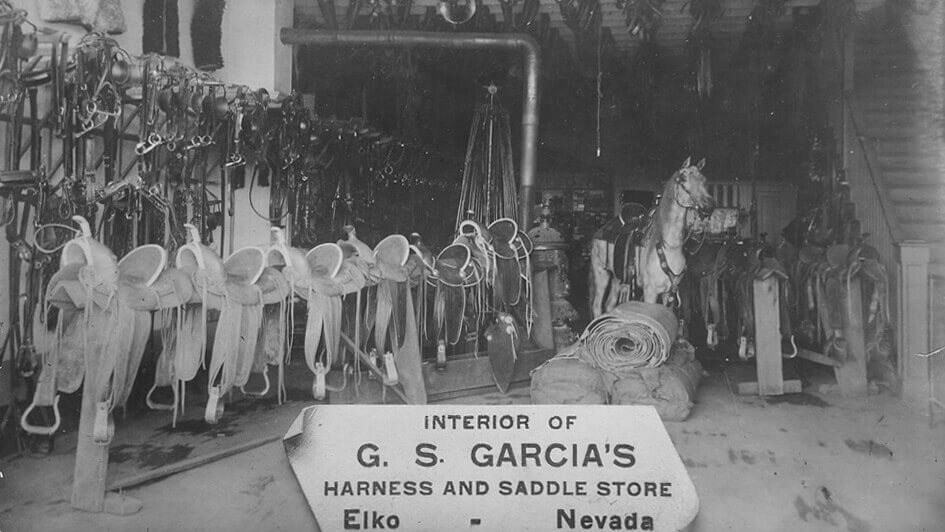
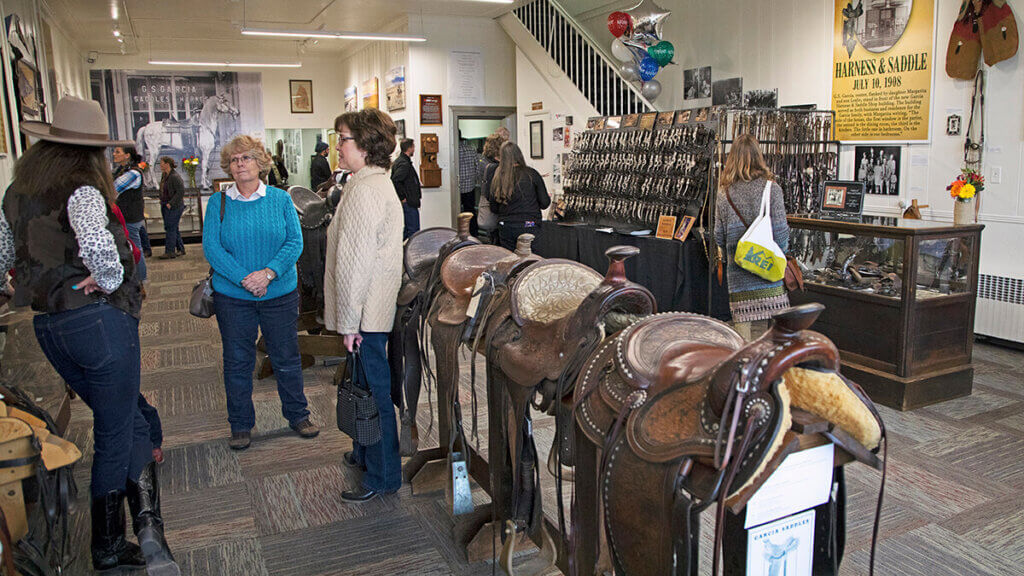
Nevada has so many different stories to tell, which could be the very thing we love most about this state. From stuff like Vintage Vegas to early prospectors and the present-day Nevada gold belt, famous gunslingers to ladies of the night, atomic testing to ranching, the story here is a multi-faceted one, and continues to grow in ways even we can’t see coming (I’m lookin’ at you, Burning Man). But the story of the Great Basin Buckaroo, man. Sexy stuff. This is an often overshadowed tale because of the neon-infused mobster tales, the largest silver strikes in the nation, or probably just the fact that in every outsider’s mind’s eye, what is there to ranch in Nevada? It’s all one big sandy plain, right? Wrong. If you’ve been to the Silver State, you’ll know that ranching is VERY much alive in northern Nevada to this day, and there’s one group of folks doing a great job at guarding that tradition. The internationally known J.M. Capriola’s has earned its reputation as one of the finest saddle makers in the American West, and has swiftly executed their latest project. Though their store has operated in downtown Elko for decades, they’ve gussied up the original digs just a few storefronts down and rechristened it The Cowboy Arts and Gear Museum.
After the founder passed away, the business moved down the block (to its current location) and the original store location operated as a local power company. As you might imagine, some interior AND exterior improvements were made to the building since 1894 when he first settled in, but the owners have brought the exterior glory back to life. And I’ll tell ya what, it has a saucy way of beckoning you inside just by the looks of it, it’s that good. The museum is loaded to the brim with antique saddles, collector-quality silver spurs, stories of local legends, and the importance of culture and traditions of the buckaroos of the American West. It’s not on the Historical Register just yet, but we’ve got all our fingers and toes crossed over here. Nonetheless, it’s a pretty incredible example of bringing the past back to life and continuing the story at this iconic Nevada location. We’re tippin’ our buckaroo flat hats to you, Capriola’s.
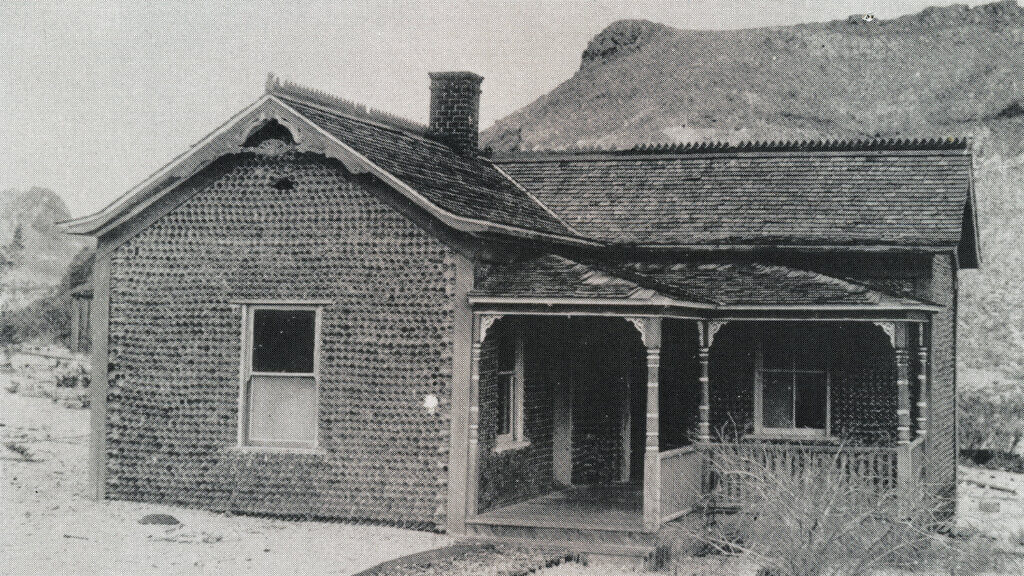
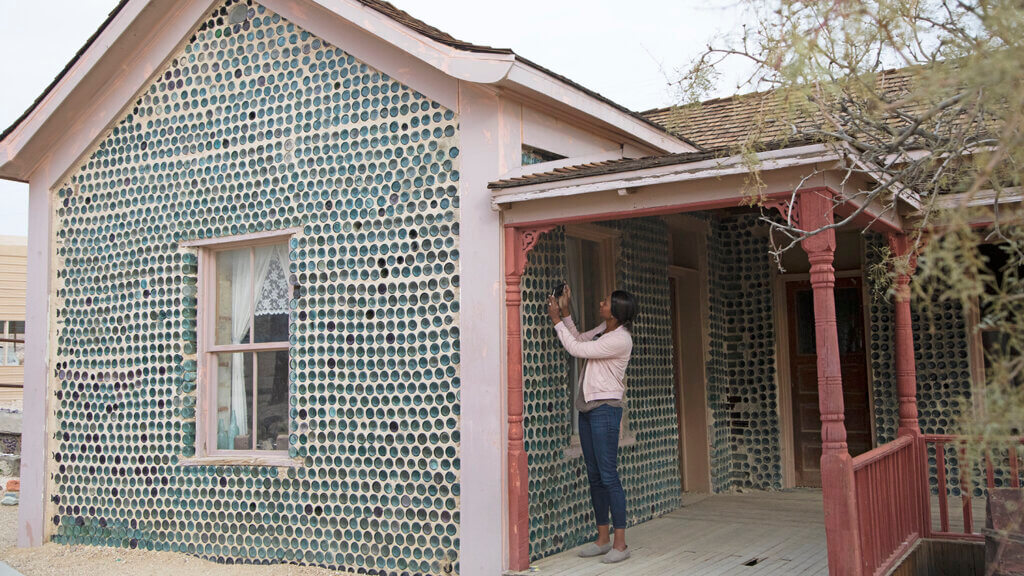
What happens when you live in a desert, but chop down all the trees to build a railroad and then suddenly don’t have any resources to build stuff like buildings? In a town full of super thirsty hard working miners: BOTTLES, that’s what. If you keep those lookin’ balls peeled, there are tons of bottle houses all over Nevada, especially in the southern end of the state. Goldfield has a few, but without a doubt, the HQ of bottle houses is none other than the storied Rhyolite Bottle House… or if you’re really a diehard history nut like us, you’ll know it by its official name: the Tom Kelly Bottle House.
The glimmering bluish-purple facade kinda sorta feels like a desert mirage when you come up on it, but sure enough, it’s a real house in front of you. Tom Kelly is the guy who built the place, or rather, drank it, way back in 1905 when Rhyolite was a boomin’. We may never know how many he was personally responsible for draining, but with something like 50 saloons operating in a town of only 5,000 people, Kelly collected about 50,000 bottles. This was enough to build a three-room house, and by the time it was finished in 1906, it had already drawn so much attention that he decided to raffle it off instead of living in it himself. That entrepreneurial hustle, we like it. The home was really lived in for the next seven decades, and was even a movie set when Paramount Pictures filmed there in the 20s. Today, it’s the oldest and largest most complete known bottle house in the nation and is such a rarity that a BLM officer guards the thing just about 24 hours a day. When checking the place out, zero in on the bottles… they’re super cool. You’ll see plenty former beer vessels (remember that AB = Anheuser Busch), but see if you can spot a few pretty amazing bottles of other things, like “stomach bitters,” while you’re at it.
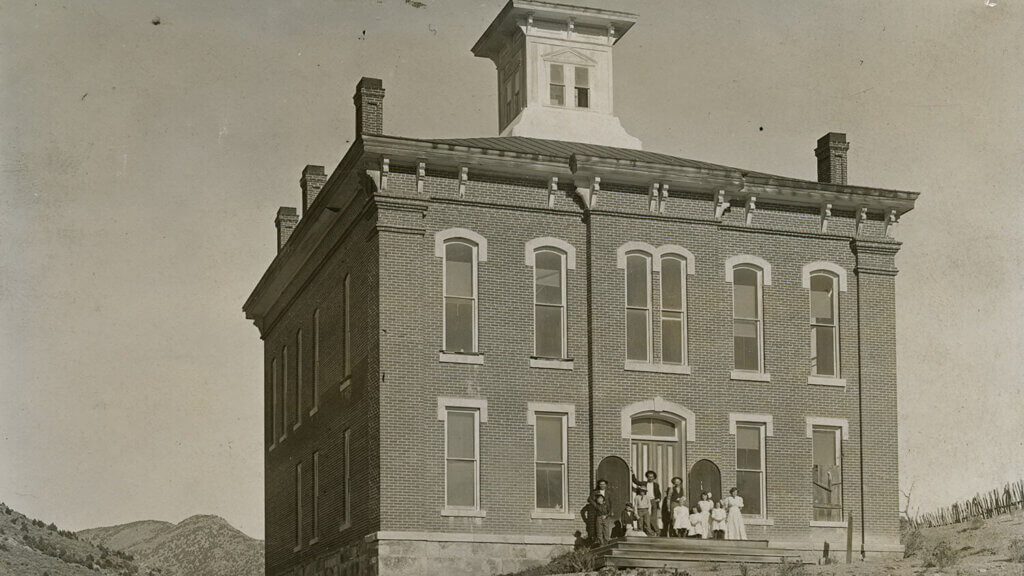
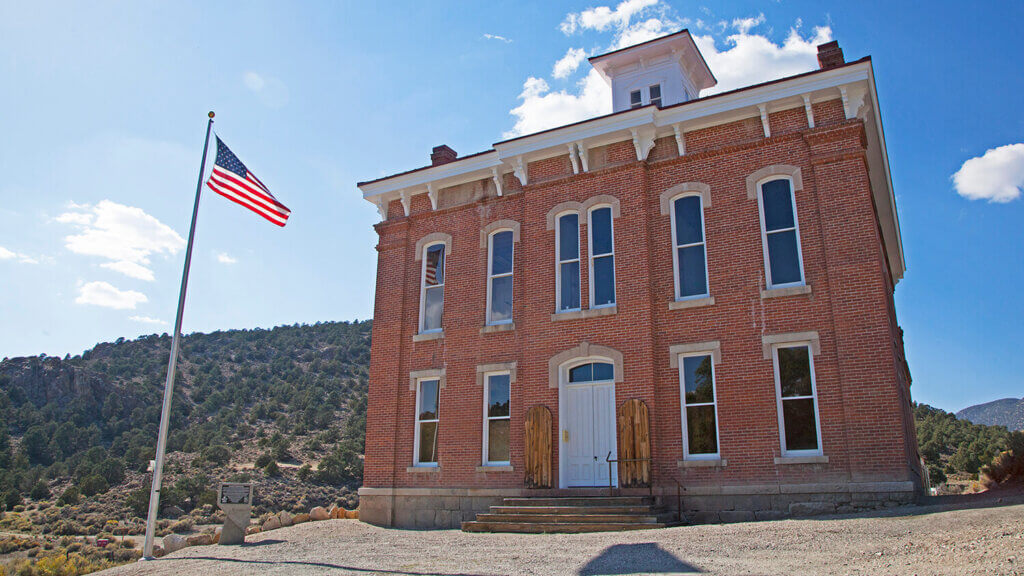
Holy gun-slingin’ smokes, guys. Of all the ghost towns in Nevada—and remember, there are a LOT—Belmont Ghost Town takes the cake. For one thing, it’s totally off-grid so just being there already feels like you’ve stepped back in time. But the BUILDINGS! The Nevada State Historic Preservation Office came in to survey the movie set quality homes, saloons, 100 foot brick chimneys, courthouse and bank and threw a blanket designation over the entire dang town, that’s the caliber of awesome we’re talking about here, plus the whole place is on the National Register, too. Rickety old wooden buildings, perfect stone fireplaces, crumbling brick archways, the whole 1860s gamut. And then you see Mama Bear sitting quietly up on the hill in all her glory: The Belmont Courthouse.
The whole town is amazing, but the Belmont Courthouse? She’s the anchor, baby. The only reason she is not in as much of a state of decay as the rest of the town is because the roof was left intact after the town bust. Remember the timber lesson with the Bottle House? Yeah, same deal: the lumber was the most valued resource because it just wasn’t common in Nevada, so the miners took the roofs off their houses with them when heading to the next Boomtown. From details on the elaborate construction of the Courthouse to a few famous visitor signatures on the walls, to mysterious suicides and historic artifacts original to Belmont’s glory days, it’s easy to spend an entire afternoon exploring this bewitching historic site.
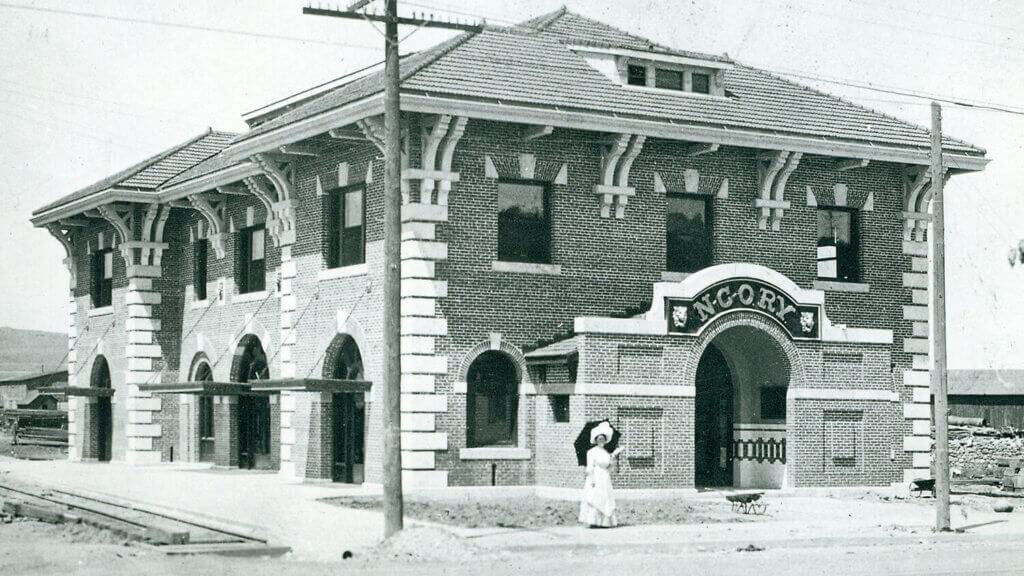
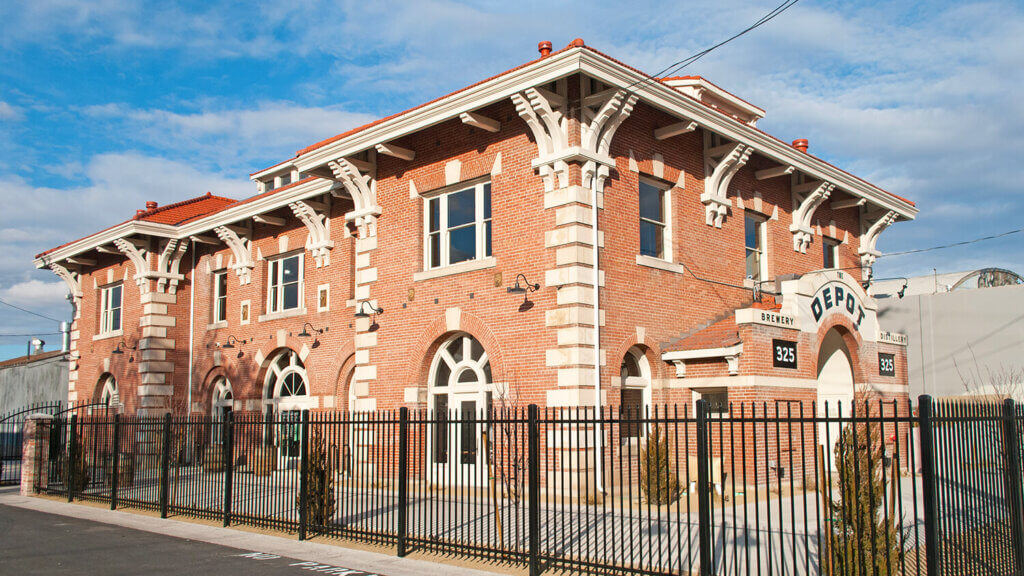
Super similar to the historic preservation mastery going on at the Mizpah, a former train depot in downtown Reno is a pretty close second. But you know what? This one definitely has more a Cinderella-type story going on, that’s for sure. In fact, as little as about ten years ago, this place was not in good shape. As the former Nevada-California-Oregon Railway Depot, this place sat abandoned for decades, slowly falling completely victim to time.
This three-story building was originally built in 1910 and functioning as an actual HQ for the railroad until 1937. From there, it took a turn for the worse… that is, until their next door neighbor saved the day. Yep, Louis’ Basque Corner owners swooped this historic beaut up, privately invested in breathing era-specific life back into it, and yow, did they swing for the fences. The masterminds behind The Depot clearly had historic preservation front of mind (yay!), but just being in there makes you feel next-level cool. Like you’ve gained access to a swanky place you somehow sweet talked your way into, as you sit there sipping on Depot-distilled craft cocktails, surrounded by blueprint-style wallpaper for the railyard, original brick walls, and a pretty damn impressive staircase. To be able to enjoy a historic building like this with a brand new purpose? Total slam dunk, guys. Doesn’t matter what’s inside, just the fact that you can get in the door to begin with, support a local business, and embrace the past like this makes it a happy place we think we could all use a bit more of.
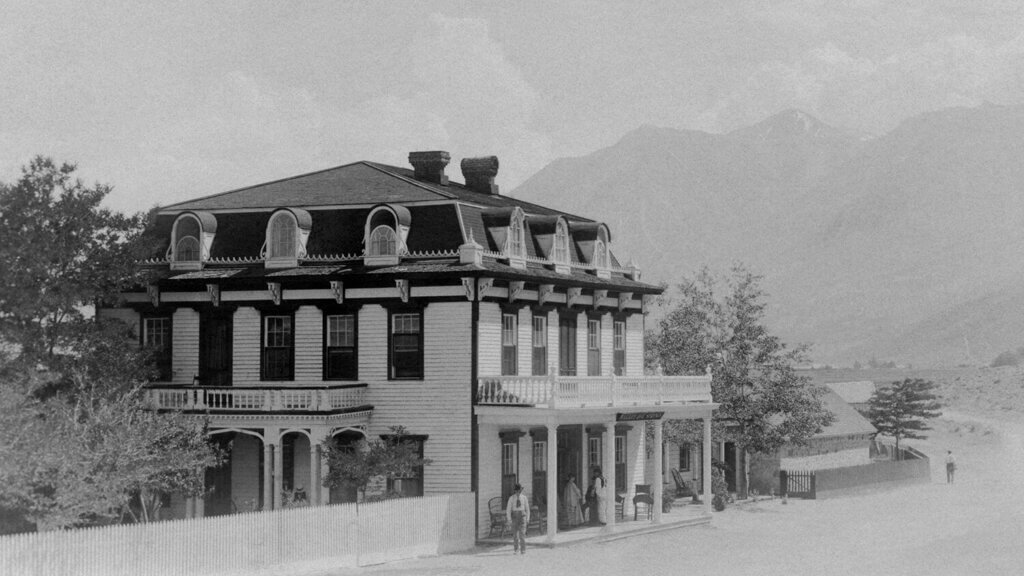
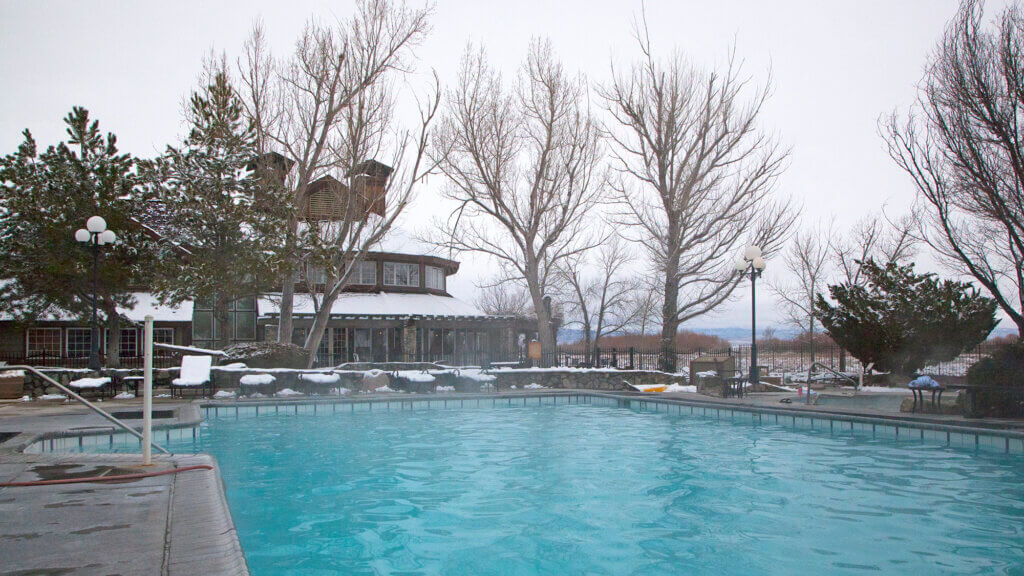
Oh man, how we do love a good Nevada hot spring, yessirree Bob. And to be able to bask in the tasty, therapeutic waters that drew people like Mark Twain, Clark Gable and a handful of United States Presidents? There just isn’t a quicker way to my heart than combining a hot spring with history you can’t say no to, but Carson Valley’s David Walley’s Resort has done it.
Located within the oldest settlement in the state means that it’s going to pack a pretty satisfying historical punch by default, right? Right. A few frame cottages and a stone outbuilding still stands at this Genoa property, while others have been made to look old but are really newer buildings. But for us, those historic buildings still stand out and there’s no mistaking that stone outbuilding, babe, not a chance. With an enormous hot springs-filled swimming pool, several smaller tubs, a full-on spa, restaurant and hotel, and face-melting views of Carson Valley We’ll be the first to confirm that this is one of those properties you’ll struggle to pull yourself away from. Which is why we’re starting to think that maybe it was no accident the Pony Express Riders’ route skirted right around it.
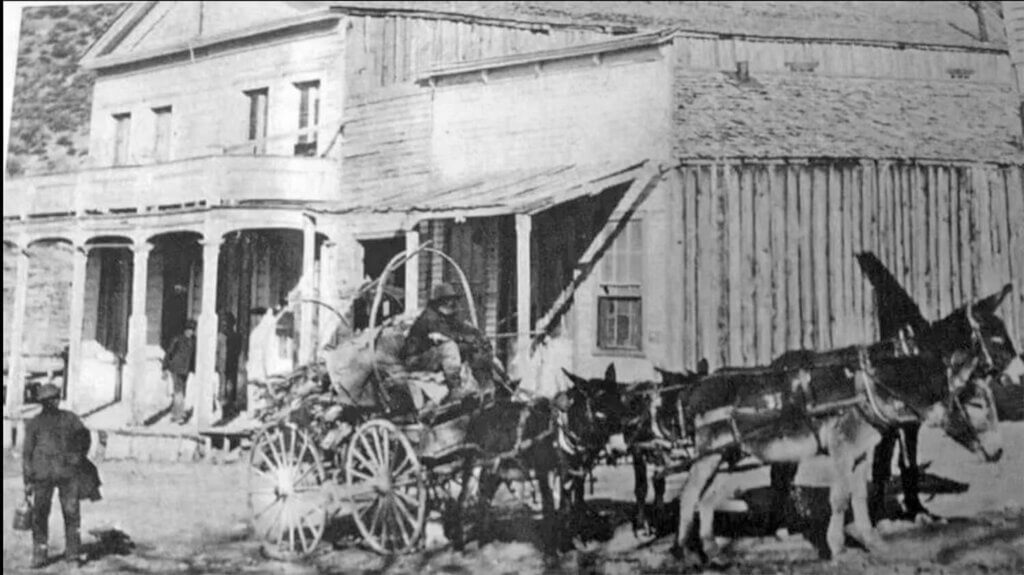
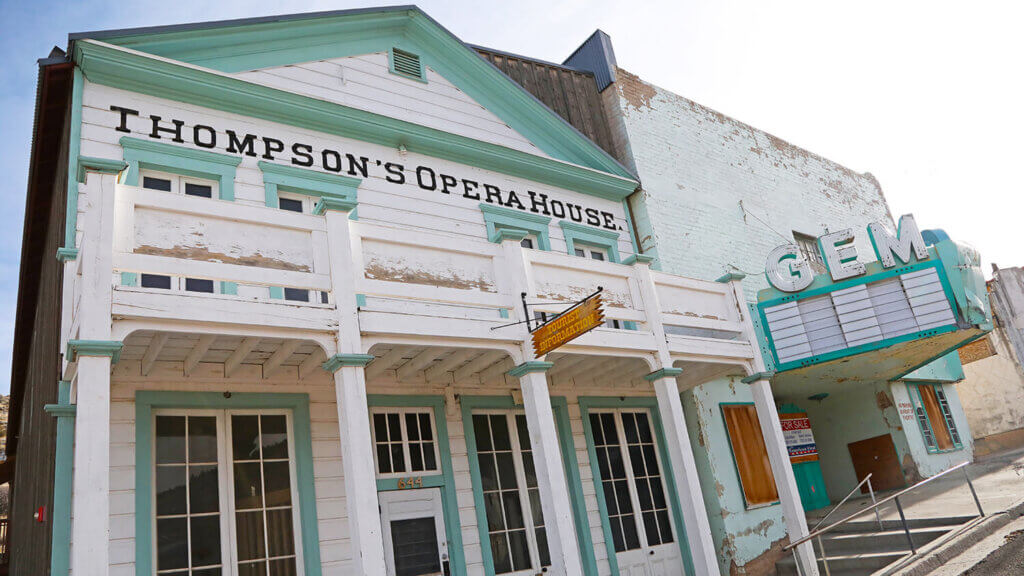
There’s the real American West you picture: the shootouts-in-the-street and women-slinkin’-around-the-red-light-district sort of place… and then there’s Pioche. It’s a place that has flown under the radar (for reasons I couldn’t even begin to understand OR explain), but it truly is the real stuff. None of the cheesy put-a-nickel-in-the-thing touristy trap type stuff. The lawlessness in Pioche was real, and what remains there today is proof of just that.
…Like Thompson’s Opera House, an 1870s public meeting space-turned-theater, original to its location since the day it opened for business. It was built and owned by a guy named Aleck Brown, but Arthur S. Thompson got his hands on it by 1891, and get this, renovated it. We know what you’re thinking: what, in the span of less than 20 years needs an honest renovation, but he did implement some pretty baller upgrades, like a new stage and floor. While it was used as a sort of meeting space before, Thompson declared it an official opera house, which over time, was used for live performances and later “electric movies.” The place basically sat there in a sad limbo from the 1940s until the 90s, when it was restored back to former glory and placed on the National Register of Historic Places. Today, the building is a hotbed for historical and cultural events, and if you want to have your very own historical moment here, you can say adios to the Vegas wedding chapel and tie the knot at Thompson’s, ya’ll—Wild West style.
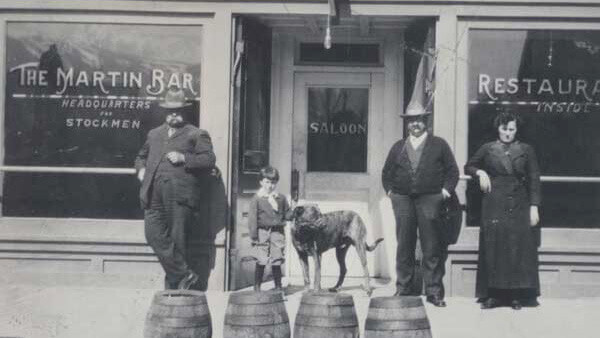
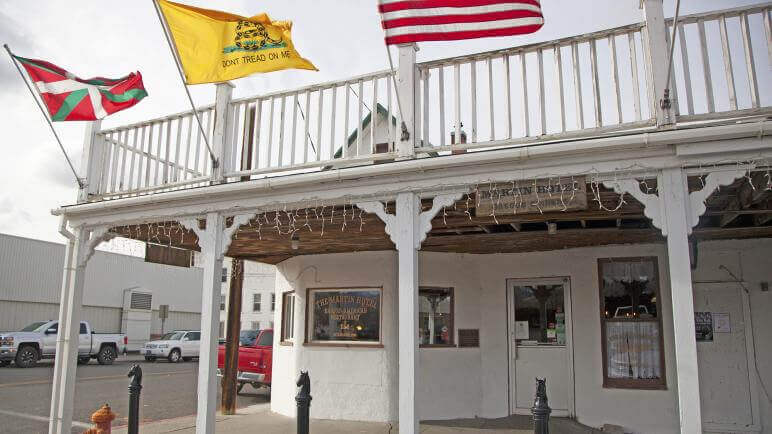
Did you really think we’d get through this thing and honestly leave out a Basque spot? Nah, not happening. The cool thing is, pretty much all of the Basque restaurants in the entire state are qualifiers. Even so, the Martin stands out. I just can’t get past those original stamped tin walls, period. If you’re new to the scene, Nevada is, historically and presently speaking, home to tons of Basques… or people from the cultural region spanning north-central Spain and southwestern France. They came to Nevada to work as sheepherders, where they would spend weeks or months herding flocks in northern Nevada ranges, then come back to the nearest town for food, supplies, and a break. They headed to Basque boarding houses where everything was communal, which was good. Imagine no facetime or human interaction for weeks, or worse, months. Everything was done family-style… they slept in bunks upstairs, and then all dined and drank together in a downstairs restaurant. A few of these properties exist throughout northern Nevada, and it’s a suicide mission trying to pick which one is your fav. They’re all awesome.
The Martin, vintage enough to make the National Register of Historic Places, remains beloved—and patronized—by die-hard locals and visitors alike today. The boarding house upstairs is no longer in operation, but the restaurant? In full swing, baby. Embrace the true Nevada experience and order up a Basque-style dinner, where you’ll be seated family style and presented with fresh bread, soup, salad, beans, usually some kind of stew, french fries, red table wine and dessert. Oh yeah, and the main course: garlic-loaded steaks, or lamb chops. If those original tin walls could talk, you can bet your booty there’d be a few good stories involving a Picon… or three.
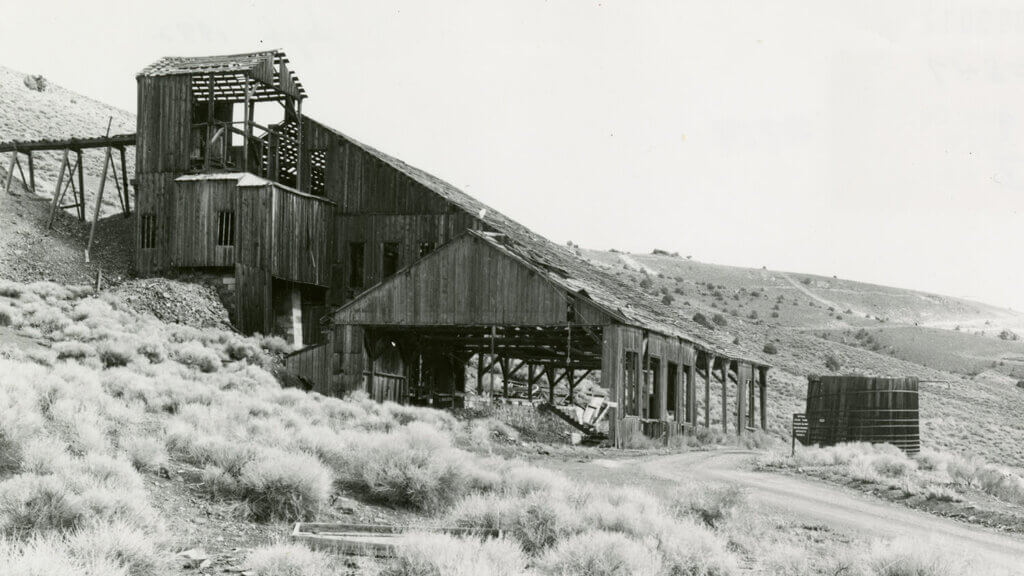
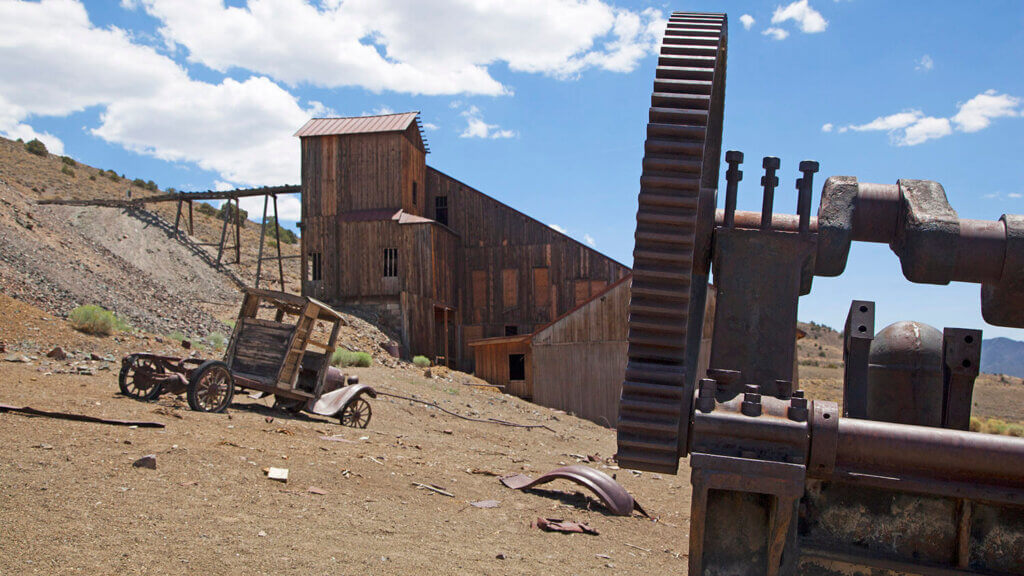
Berlin Historic District
Nearest Fallon or Austin
Find it off the Loneliest Road in America road trip
Nevada is home base for more ghost towns than anywhere else in the entire United States with hundreds to ramble through whether they be the full-on perfectly preserved type, or foundation ruins that require a tad bit more imagination for the former grandeur going down. It doesn’t take long to figure out that along with it comes most abandoned mine features… which, to be honest, may be more common to roll up on than quaint, iconic mining cabins. But when it comes to Berlin, you can have your cake and eat it too, and gosh dang it, I love it when that happens. In fact, the entire area is cool in ways you’d never suspect, so they just cast a big ol’ historic designation net over the entire thing, deeming it the Berlin Historic District. Today it’s a state park (quadruple bonus, right?) that includes everything from the largest concentration of swimming dino skeletons ever discovered to one of the more postcard-perfect ghost towns you’ll find.
And with that big ol’ beautiful grabbag comes one of the more impressive mill site ruins in Nevada. Not just foundations, but an actual mill. With stuff inside it. When Berlin was in full swing in the late 1800s, it didn’t boom as big as Tonopah or Goldfield but was totally worth writing home about. The 30-stamp mill is one of the best of its type in the entire state, and is protected by the National Register of Historic Places. Oh, plus there’s an old Ford truck begging for a photo op, a beautiful machine shop with 60-mile views of the valley below, old miner cabins, Diana Mine and, of course, the Ichthyosaur fossil house. Worth the 1.5 hour trek from Reno? Uh yeah, obviously… especially if you’ve got a sixer of Ickys (Great Basin Brewing Co’s state fossil-inspired pale ale) in the cooler.
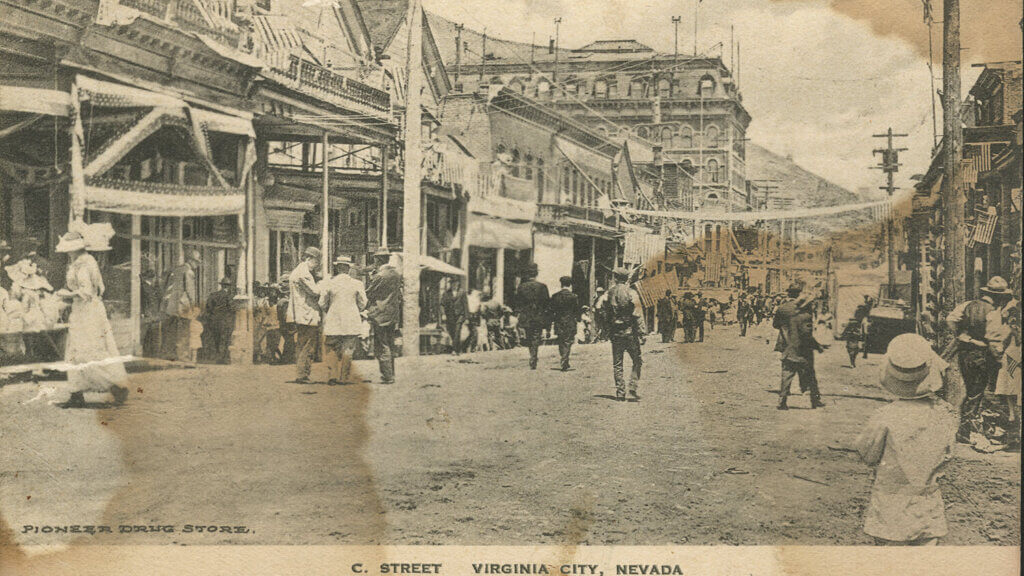
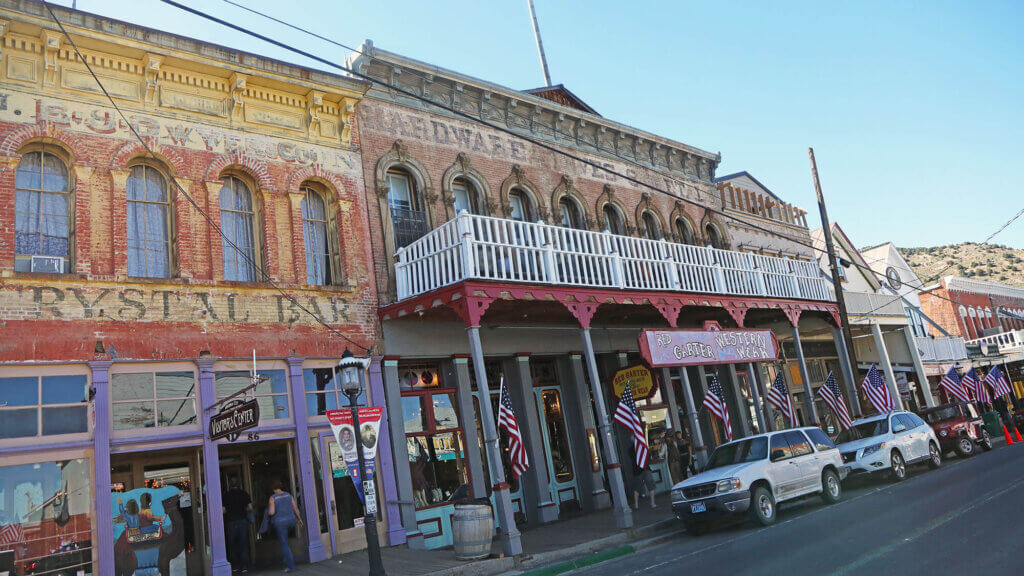
The Entire Town of Virginia City
Find it on the Lake Tahoe Loop road trip
Just as we started, of course we gotta end with some heat. There is no better way to end this lineup than with the big boy: the entire town of Virginia City. And this isn’t just a historic district, or historic location—it’s what you call a National Historic Landmark. That means, the only way it gets that sort of crowning is because it played a role in national history versus just state or local history. And this crown isn’t perched atop just a few buildings—the landmark is the whole damn place. And it’s true, Virginia City, nationally speaking, is a big deal because it was, and still continues to be the record holder for the largest silver strike in the history of the U.S. The wealth pumping out of the Comstock Lode was enough money to basically fund the development of the entire western United States, building cities like San Francisco. That, and it was known for pretty major developments in mining technology along with financial support during and after the Civil War, which led to the addition of another great state to the Union: Nevada. Plus, in order to be branded a National Historic Landmark the whole schtick has to go through an Act of Congress and then be signed by the President. So yeah, you could say it’s a big deal, baby.
And the beauty of it all is that just by swingin’ on thru, you’re not only moving Virginia City’s story forward, but you’ll feel like you’ve teleported back to the 1860s all at the same time. It feels important because it is. From the red light district, immaculate churches, towering four-story school, miner cabins, mine adits, wooden boardwalks, opera houses and more, this place is the real freaking deal. Word on the street is that it’s a paranormal haven, alleged to be one of the most haunted places in Nevada, AND nationwide. But hey, if you were Mark Twain and catapulted to fame at Virginia City’s famed Territorial Enterprise newspaper, wouldn’t you want to hang out for the rest of time here, too? Some serious history went down in the days of the Comstock Lode, and the way it’s been immaculately preserved divvies up the luxury (and privilege!) of experiencing how it was and has continued to be all these years. Grab onto it because it is and may always be both relevant and just plain exceptionally good stuff. #NVHistory
EDITOR’S NOTE: This story would not, in a million years, have been possible without the help and guidance of our friends at the Nevada Historical Society. Having opened in 1904, the Nevada Historical Society is Nevada’s oldest cultural institution that houses books, newspapers and periodicals, print files, maps, government documents, subject files, manuscript collections, and of course, photos…over 500,000 to be exact. To learn more about any of the properties featured in this story, or the history of the Silver State in general, be sure to check out this incredible historical resource for yourself.
Get Inspired
Related Stories
